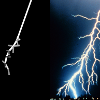Indroduction
 |
Introduction to VLF |
 |
Introduction to VLFIntroduction to Whistler Waves in the Magnetosphere |
 |
The History of Very Low Frequency (VLF) Radio Research at Stanford |
Antarctic Research
 |
|
 |
|
 |
|
 |
|
Lightning and Related Phenomena
 |
Electric Field Remote Sensing |
 |
|
 |
|
 |
Terrestrial Gamma-ray Flashes |
|
|
|
 |
|
Magnetospheric Dynamics
 |
|
 |
The Radio Plasma Imager |
Numerical Techniques
 |
The Discontinuous Galerkin Method |
Whistler-mode Waves and Wave-Particle Interactions
Whistler-mode Waves and Wave-Particle Interactions
 |
Raytracing |
 |
Satellite Observations of Lightning-Induced Electron Precipitation |
 |
The Generation of Magnetospheric Chorus Emissions |
VLF Remote Sensing
 |
Gamma-ray Burst Effects on the Ionosphere |
 |
Subsurface Detection |
 |
Transmitter-Induced Precipitation of Radiation Belt Electrons |



